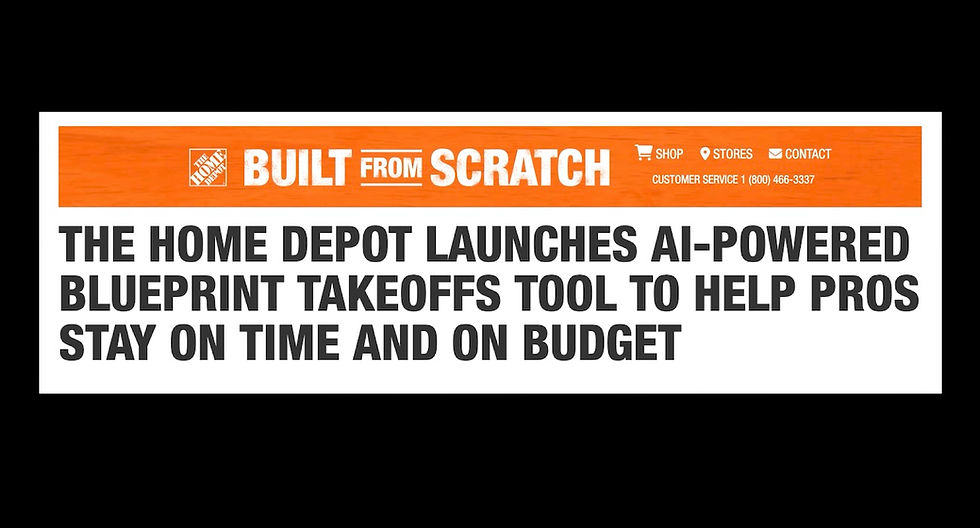Amid Slowing Sales and Cheaper Lumber, Dealers Risk Failing to Curb Operating Expenses
- Craig Webb

- Aug 14, 2024
- 3 min read
By Craig Webb, President, Webb Analytics

Dealers revising their sales forecasts downward to account for unexpectedly sluggish business are starting to find themselves in a bind because rises in operating costs are gouging profits.
Except for Builders FirstSource, all the most prominent public companies in building products construction reported rises in selling, general and administration (SG&A) expenses that exceeded sales changes during their latest reported quarter compared with the same period in 2023. At BlueLinx and Floor & Decor, SG&A rose even as sales went down. The major exception--BFS--said it kept SG&A down largely because of lower commissions attributed the 3.8% decline in core organic net sales. How companies measure SG&A can vary dramatically between companies, but when so many companies report the same disparity, one can assume there's a trend.
Those increased costs undoubtedly cut into net profit. Here are how the numbers changed for a dozen public companies during their most recent quarters (typically the April-June period) compared with the same quarter in 2023:
Total Net Sales | Organic Net Sales | Net Profit | |
Home Depot | 0.6% | -3.3% | -2.1% |
BFS | -1.6% | -3.8% | -15.0% |
Beacon | 6.8% | 2.8% | -17.3% |
BlueLinx | -5.8% | -41.4% | |
Boise BMD | 1.1% | -2.0% | -13.3% |
GMS* | 8.4% | 4.0% | -25.4% |
UFP Construction | 4.4% | -15.5% | |
Fortune Brands Security | 12.0% | -7.0% | 36.0% |
Fortune Brands Outdoors | 4.0% | 4.0% | 3.0% |
Masco | -1.7% | -2.2% | |
Owens Corning | 8.8% | -17.4% | |
Trex | 5.6% | 12.9% | |
AZEK | 12.1% | 44.8% | |
James Hardie** | 5.0% | 0.3% | |
Ferguson*** | 2.4% | -0.9% | 3.2% |
SiteOne | 4.4% | -3.0% | -2.7% |
Floor & Decor | -0.2% | -9.0% | -20.7% |
Tractor Supply | 1.5% | 50.0% | 0.9% |
*--Measured on a sales per day basis
**--North American sales and EBITDA
***--Net profit not provided, so adjusted operating profit used
What's going on, probably throughout the industry? It appears that dealers' payrolls and other operating expenses rose when the COVID pandemic led to a surge in business and a huge jump in lumber prices. Today, business has slowed and lumber prices have fallen, but lots of operating costs (except perhaps sales commissions) have remained elevated.
"Typically, break-even points for firms in our industry are pretty high. It doesn't take much of a decline in sales to begin to affect our bottom line," noted Brad Farnsworth, longtime head of The Farnsworth Group and longtime author of Cost of Doing Business reports. "If you lose 5% of sales, you can beat break-even real quick."
The uncertainty involved with both prices and expenses is making life tough for dealers, Farnsworth said. Some are extrapolating 2019's financials to set a starting point for what's reasonable to assume going into 2025. "People are really struggling with their numbers,"he said.
Ruth Kellick-Grubbs of Kellick & Associates urges dealers to get serious about both costs and revenues. "It's the recession playbook, without the layoffs," she said. Improving profit margins is paramount, she said, along with selling aggressively to win market share.
Creating target benchmarks is one way to manage in challenging times. Set standards for personnel costs as a percent of sales. Look carefully at corporate expenses. Examine the spread between gross profit and SG&A as percentages of sales. Aim for GP% to be at least eight points higher than SG&A%.
Also, don't think you can use sales alone to grow your way out of the problem. "The push for rapid sales growth almost never increases profit." distribution industry consultant Al Bates wrote. "Often, it least to serious financial strains." This is because sales growth often creates the same amount of new expenses. You may get bigger, but you won't get more profitable.
"The key is that whatever growth rate is achieved, it needs to be larger than the growth in operating expenses," Bates declared.






Comments